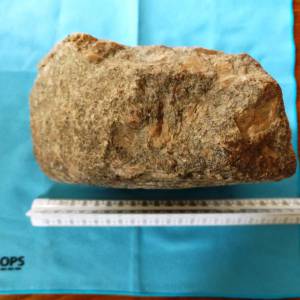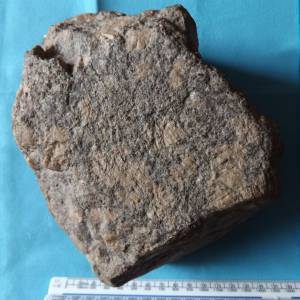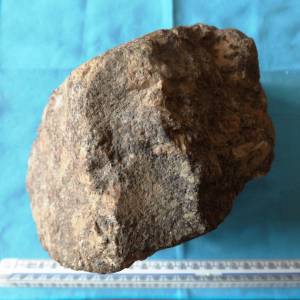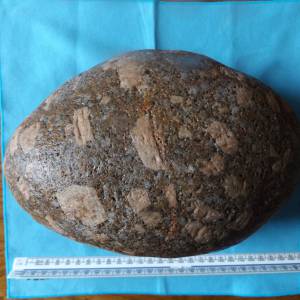|
| *****SWAAG_ID***** | 930 |
| Date Entered | 24/04/2016 |
| Updated on | 25/04/2016 |
| Recorded by | Tim Laurie |
| Category | Archaeological Random Find |
| Record Type | Archaeology |
| Site Access | Public |
| Record Date | 01/01/2005 |
| Location | Harlsey Castle. In stone dump by public roadside. |
| Civil Parish | Not known |
| Brit. National Grid | Hidden |
| Record Name | Basal stone of an Iron Age beehive quern made from a glacial erratic boulderof Shap Granite and lithic finds as evidence of long distance trade |
| Record Description | This fragment of the basal stone is of considerable interest in that, rather than the usual local sandstone, it was made from Shap Granite and most probably from a glacial erratic boulder. Boulders of shap granite suitable for conversion into querns would be rather larger to that shown in the photos. Shap granite boulders of all sizes are widely distributed in the path of the Stainmore Glacier. This find confirms that glacial erratic boulders of all stone types, granite and gritstone were used as a source of querns.
|
| Additional Notes | The distribution of stone artefacts of chert, volcanic ash and other lithic types has been used as evidence for long distance trade from the geological outcrop. This overlooks the transport of these special stone types far from source by glaciers and rivers. One example is the distribution of artefacts of black Pennine Chert from Fremington Edge. This example overlooks the fact that black chert nodules are available in all outwash gravels and river gravels in the Vale of Mowbray. Water rolled cobbles have no flaws, whereas chert at outcrop is always frost shattered and flawed. Thus being of no use for knapping. |
| Image 1 ID | 6774 Click image to enlarge |
| Image 1 Description | The quern fragment |  |
| Image 2 ID | 6768 Click image to enlarge |
| Image 2 Description | View of one face and curved edge |  |
| Image 3 ID | 6775 Click image to enlarge |
| Image 3 Description | Detail of quernnfragment showing biconical central perforation drilled from either face |  |
| Image 4 ID | 6770 Click image to enlarge |
| Image 4 Description | Glacial erratic boulder of the distinctive Shap Granite from River Tees gravels. |  |



